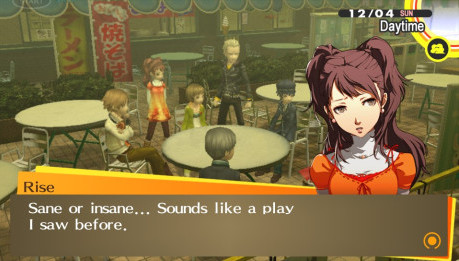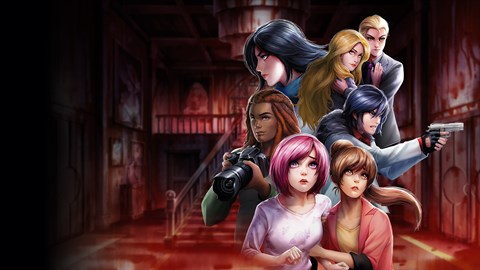
All About Visual Novels Localization
Visual novels have carved out a distinctive niche in the ever-evolving digital entertainment. These unique creations combine storytelling and captivating artwork to deliver an immersive experience that goes beyond the confines of conventional literature and video games. Over time, the enthusiasm for it expanded crucially. To address the language barriers that arose between creators and the audience from various regions, the concept of localization became essential. Let’s deep dive to discover more!

A History of Visual Novels
The roots of visual novels could be traced back to Japan, where they are recognized as visual kei or nakige. The genre began its ascent to prominence in the 1980s and has since evolved into a global sensation. Iconic titles like Dōkyūsei and Clannad played pivotal roles in shaping the identity of the genre.
Moreover, it stands as a distinct category of video games that place a paramount focus on the narrative they convey, emphasizing storytelling over gameplay mechanics. Their core identity is rooted in being narrative-driven, achieving an immersive experience by seamlessly blending art, sound, and dialogue. While it’s fundamentally text-based, it often incorporates a diverse array of gameplay elements, at times integrating 2D or 3D movement, along with elements of action, strategy, and puzzles.
Visual novels offer an exceptional first-person experience, immersing players by directly positioning them as the protagonist. This setup enables interaction with other in-game characters and the ability to make decisions that hold the power to influence the game’s ultimate outcome. It often displays a playful penchant for breaking the fourth wall, directly acknowledging the player or employing various techniques to exhibit their self-awareness as a work of fiction.
An exemplary case of this self-awareness and fourth wall-breaking could be found in Doki Doki Literature Club, where the game pushes the boundaries of conventional storytelling. In some instances, it even involves interaction with the game files themselves as a means to advance the narrative, showcasing a truly innovative and unconventional approach to player engagement.
On the other hand, a persistent debate surrounds the classification of visual novels as video games, primarily due to the significant amount of time dedicated to reading, often with minimal traditional gameplay elements.
The Fusion of Art and Storytelling

Visual novels represent a distinct form of interactive fiction where the spotlight shines on narrative prowess. What sets them apart is their tales with vivid, often handcrafted, and illustrations. Readers, or players, are drawn into intricately detailed visual realms where their choices wield influence over the unfolding narrative. These choices have the power to steer the story toward an array of outcomes, infusing an interactive dimension into the storytelling experience.
A Wide Range of Themes
Visual novels encompass a wide range of themes to catch mass interest. These virtual narratives could explore genres, such as romance, mystery, fantasy, science fiction, horror, and much more. These themes are intricately woven into the storytelling, often featuring well-crafted characters and labyrinthine plotlines.
A Medium for Creativity
This kind of art has evolved into an expansive platform for storytellers, artists, and game developers to showcase their creative work. With readily accessible tools and platforms, even independent creators could craft their distinct narratives, offering a diverse range of innovative experiences to a global audience. It then transforms not for mere entertainment. The creators serve as a potent medium for addressing intricate social and emotional themes. Many titles delve into issues like mental health, relationships, identity, and societal challenges. Furthermore, through interactive storytelling, they foster empathy and understanding.
Top 5 Visual Novels

The narration of an art feels like an empty shell as it couldn’t be turned on by real emotions. To immerse yourself in such an experience, get to know the top 5 visual novels below.
- The House in Fata Morgana centers around an amnesia protagonist who awakens in an enigmatic mansion. Within these mansion walls, an unnamed maid weaves a tale that serves as a key to unraveling the mysteries of both the house and the protagonist’s past. The story takes unexpected twists and turns, ultimately delivering an unforgettable and riveting experience. Moreover, this visual novel offers a gothic theme to cover its elements, such as the soundtrack.
- The Letter boasts a staggering 700,000+ words, offering more substance than most full-length novels. Taking inspiration from legendary horror movies, such as “The Ring” and “Ju-On,” the game provides its fair share of chilling moments, cleverly developing various relatable characters and their complex relationships. As dark supernatural forces loom over a new house on the market, it falls to the players to decide whether to rescue their characters from this malevolent influence or allow them to succumb to its sinister grasp.
- Little Busters! is another entrancing romance and drama game developed by Key, the same creators behind the beloved “Clannad.” Riki, a vulnerable young man struggling with narcolepsy, plays the protagonist. The narrative revolves around his daily life with his childhood friends. However, players later discover the sense of mystery through the plot. In Little Busters!, there are numerous distinct endings waiting to be uncovered. To fully grasp the entirety of the story, players would need to replay the game multiple times, exploring various paths and outcomes.
- Clannad’s narrative centers on Tomoya, as the main character, who begins the story in a state of depression and feeling adrift. As the story unfolds, players accompany on his journey to discover his purpose through the meaningful relationships he forms and the romances he pursues. Clannad features a multitude of branching character routes, each dedicated to one of the main female characters. The game offers a substantial playtime of approximately 80 hours, delivering an impressive amount of content without compromising on quality.
- Zero Escape: The Nonary Games bundles the initial two titles from the Zero Escape series, namely “999: Nine Hours, Nine Persons, Nine Doors” and “Virtue’s Last Reward.” These games fall under the genre of mystery and puzzle visual novels. Within this compilation, players could immerse themselves in a rich gaming experience characterized by intriguing and unforgettable characters, a gripping mystery, and mind-bending puzzles. The combined gameplay time for “Zero Escape: The Nonary Games” spans around 40 hours, providing an extensive and rewarding journey for players to enjoy.
The Challenges of Localization Toward Visual Novels

As visual novels’ audience has reached global interest, localization takes an essential role to transfer one language to another with a proper treatment. It then poses significant challenges, as it entails more than translation work. It also involves adapting the game to a new culture. The following are some of the primary difficulties encountered for this issue:
Addressing Cultural and Contextual Variances. This kind of art often contains cultural humor, wordplay, references, and subtleties that may not readily resonate with a different culture. Localization teams must adjust the content to make it relatable and pertinent to the target audience.
Managing Text Length and Space Limitations. Different languages exhibit variations in sentence structure and word length. Translating text from one language to another, while ensuring it fits within the available space in the user interface could be a demanding task.
Ensuring Consistency in Character and World Development. It’s crucial to maintain coherence in character personalities, backgrounds, and the fictional world building. Translators must ensure that the translated content aligns with the established narrative and character evolution.
Tackling Voice Acting and Audio Localization. If the visual novels include voice acting, adapting the audio could be intricate, requiring the discovery of voice actors who match the tone and delivery of the original cast.
Handling Divergent Storylines. Visual novels frequently feature multiple story branches based on player decisions. Translators must accurately convey these choices and their consequences in the target language, which can be a complex task.
Customizing the User Interface and Menus. Adapting the user interface, menus, and in-game graphics for a new language could be time-consuming and may necessitate modifications to accommodate diverse character sets and text orientations, such as switching from left-to-right to right-to-left.
Ensuring Quality. Stringent testing is vital to detect issues like text overflow, broken links, or text not fitting within dialog boxes. Localizers must guarantee the game functions smoothly in the target language.
Compliance with Legal and Rating Requirements. Various regions may have specific legal mandates or content rating guidelines. Localization teams need to be aware of these regulations and make appropriate adjustments to the game’s content.
Coordinating the Localization Team. Effective collaboration among translators, editors, proofreaders, and cultural experts is essential to ensure a high-quality localization. Miscommunication or a lack of coordination can result in inconsistencies in the final product.
Enhancing Player Experience and Engagement. A successful localization should capture the emotional and immersive elements of the original game to engage players effectively. This entails not only translating words, but also conveying the intended atmosphere and tone.
Considering Market Preferences. Understanding the preferences and expectations of the target market is critical. Different regions may have varying tastes for character names, cultural adaptations, and other elements that require consideration in the localization process.
Adapting to Multiple Platforms. If the visual novel is available on various platforms, such as PC, consoles, or mobile devices, the localization must be tailored to meet each platform's unique requirements and constraints.
In Conclusion
Visual novels occupy the crossroads of literature and gaming, offering a distinctive and enthralling storytelling platform. Thanks to their wide range of themes, interactive storytelling, and boundless creative possibilities, they continue to captivate people worldwide. Meanwhile, the localization process for this kind of art is a complex process that extends beyond mere translation. It demands a deep understanding of both the source and target cultures, as well as a keen attention to detail, in order to deliver an engaging and authentic experience to players in the target language.